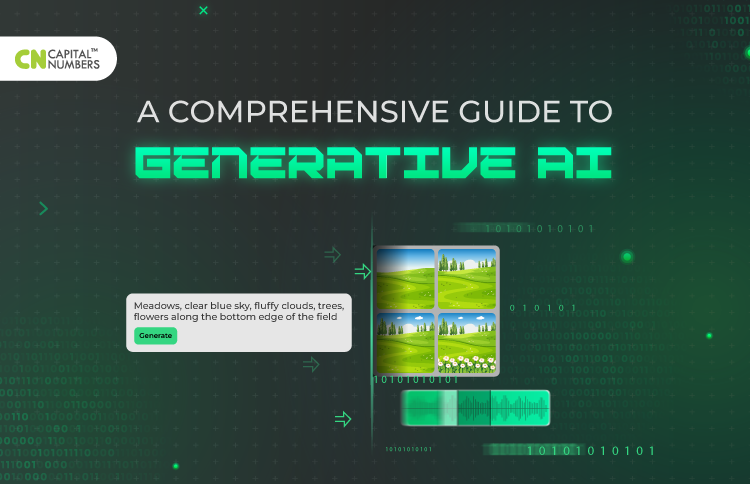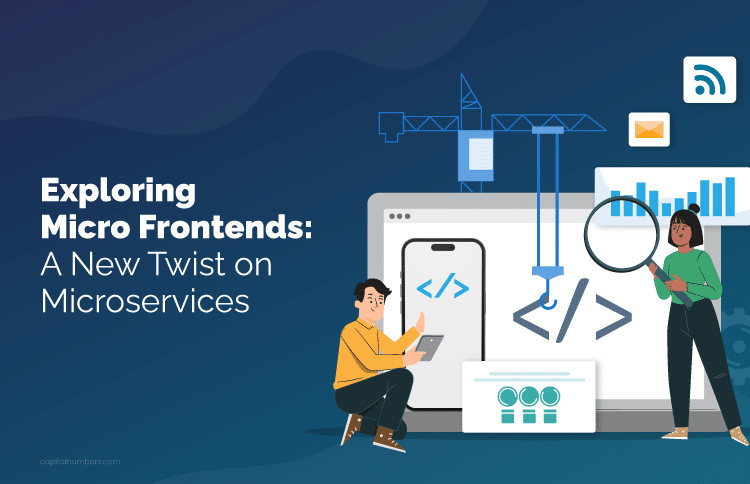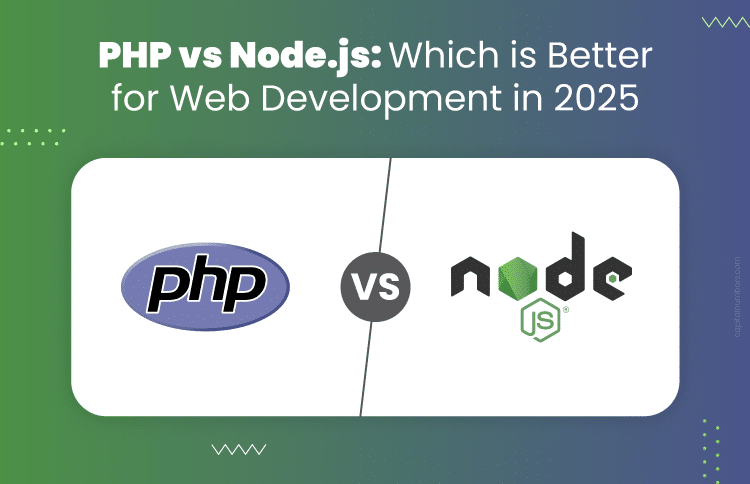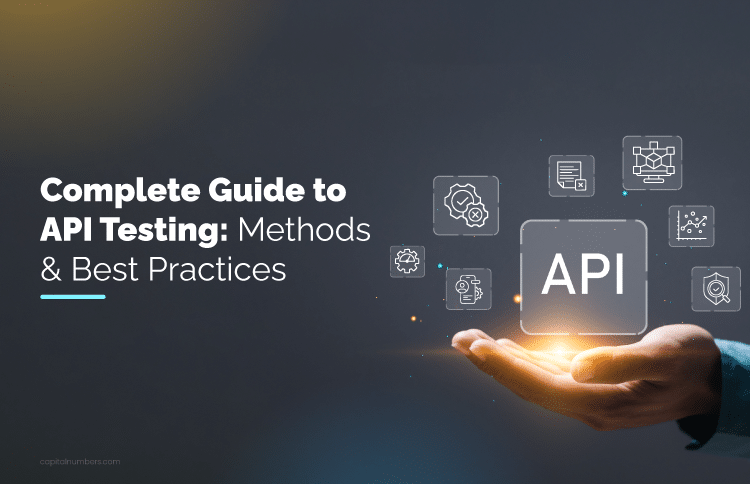A Comprehensive Guide to Generative AI
Table of Contents
Generative Artificial Intelligence (GenAI) is one of the most popular technologies people use under the broad umbrella of Artificial Intelligence (AI). It is the subset of Deep Learning (DL). The term GenAI was first introduced in 1960 when Eliza chatbot was created by Joseph Weizenbaum, but we started using it in 2014 when Ian Goodfellow introduced generative adversarial network (GAN). GAN provides a deep learning technique for organizing competing neural networks to generate and rate content variations. There are two types of DL models, of which generative models are used in the GenAI applications.
1. Discriminative models
- Trained on labeled data set
- Trained to classify or categorize data.
- Discriminate data instances
2. Generative models
- Trained on a large data set
- It produces new data similar to the data it was trained on
- Generates data instances
Generative AI can produce high-quality content using generative models (which uses various AI algorithms at the backend), which include text, images, audio, animation, 3D models, synthetic data, etc. The reason behind its popularity is the ability to use different Machine Learning (ML) approaches, such as supervised, semi-supervised, or unsupervised, for its training. These models use neural networks to identify the patterns and structure within the existing data to produce new content as per the user input. As GenAI can produce complex and realistic content that mimics the creativity of a human being, it is now becoming a popular tool for various industries such as gaming, entertainment, product design, etc.
The foundation model for GenAI is created with a large amount of unlabeled data. Generative Pre-trained Transformer-3 (GPT-3) and stable diffusion are examples of the foundation models. Because of the use of the transformers, GenAI models can take natural language as a prompt, and this is one of the main reasons behind the popularity of the GenAI these days. The figure below shows the basic input and output flow of the GenAI models.
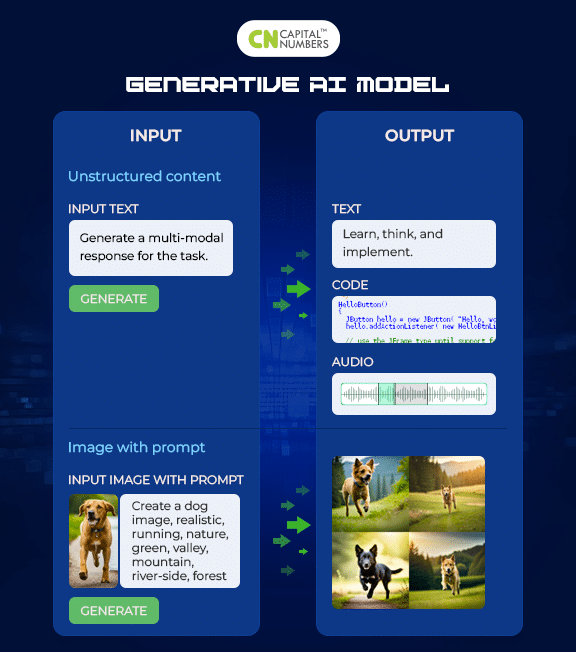
Popular GenAI models are the Language Model for Dialogue Applications (LaMDA), Pathways Language Model (PaLM), Generative Pre-trained Transformer (GPT), Google BARD, DALLE, etc. Generative AI models can be language models or image models. Recent breakthroughs in these various models have significantly advanced the capabilities of GenAI.
Working of GenAI:
We interact with the GenAI model through the prompt: text, image, audio, video, design, or any input that an AI system can recognize and process. Based on the input provided, various algorithm runs at the backend of the GenAI model and produce the results accordingly. These results can range from essays and problem solutions to remarkably realistic creations derived from images or audio of individuals.
During the initial days of GenAI, submitting data was carried out with complex procedures involving using APIs or specialized tools. Developers were using many programming languages like Python and used to write applications accordingly. Whereas recent advancements have led to improved user experiences and simplified workflows. These advancements allow individuals to describe their requests in plain language. Users can further customize the generated response by providing feedback. This user-centric approach aims to make GenAI more accessible and intuitive, empowering a broader range of individuals to leverage its capabilities effectively.
Applications of GenAI:
There are many applications where people are making use of GenAI models. Overall, GenAI has the potential to significantly impact a wide range of industries and applications. The impact of generative models is wide-reaching, and its applications are only growing. GenAI has found applications in various fields, including natural language generation used in chatbots or content generation, image generation, music composition, software development, and even drug discovery. Below is a list of a few areas where GenAI models are used.
- Marketing: GenAI is used to produce high-quality content that can help marketers with time and budget efficiency automation, the creation of targeted and personalized content, and many more. GenAI can also be used in marketing automation, which includes automation in email marketing, social media marketing, and search engine marketing.
- Video Editing: With GenAI, video editing is now easier than ever. With such tools, video editors can change the lighting in a shot from midday to sunset, generate background music, add text descriptions, or generate still images and texts from a video. It can also improve the product demonstration videos used in product marketing.
- 3D Modeling: We can generate the 3D models using the text and images as input to GenAI models. It can generate 3D shapes with high-fidelity textures and robust geometric details.
- Image Generation: GANs are commonly used to generate realistic images or even realistic faces of non-existent people. The generated images are used in artwork or 3D modeling.
- Music Generation: GenAI models can generate simple melodies to complex musical compositions based on patterns learned from vast music datasets.
- Voice Generation: With GenAI, we can create synthetic videos, deepfake videos, or videos used for game environments. Video generation has many applications in various industries, including entertainment, sport, autonomous driving sector, etc.
- Art: GenAI helps people create photorealistic art as per the required style.
- Software Development: There are many areas where GenAI is helping developers in the software development process, including code generation, code debugging, resource optimization, and improved UI design.
- Product Design: The benefits of GenAI include faster product development, enhanced customer experience, and improved employee productivity.
- Healthcare: Drug discovery is the main use of GenAI in the healthcare sector. GenAI is dramatically reducing the new drug and therapy development cycle time. It can also generate molecular structures with potential therapeutic properties, which are helpful in drug discovery.
- Finance: GenAI also plays important roles in finance and accounting, where it can be used to process, summarize, and extract valuable information from large volumes of financial documents, facilitating more efficient analysis and decision-making.
Limitations and Challenges of GenAI:
There are many concerns and challenges about the misuse of GenAI models, including cybercrime, creating fake news, generating harmful content, or deepfakes, which can be used to deceive or manipulate people. Ensuring responsible use and regulation of it is a growing concern. GenAI also has some limitations which we can face while using it. Some of the limitations are listed below.
- Slow response speed
- No licensed dataset is available
- Difficulty in identifying inaccurate information
- Lack of source identification
- Unable to assess biases
- Less adaptability to new circumstances
The Future of Generative AI
The potential for GenAI to change the world is quite appealing. We may anticipate that GenAI will become increasingly important in many facets of our lives, from entertainment and creativity to healthcare and education, as technology keeps developing and researchers create new methodologies and models. To ensure that these technologies are utilized ethically and for the sake of humanity, it will be crucial to address the societal and ethical issues highlighted in the limitation section above. To effectively collaborate with GenAI systems, employees from various industry sectors must adopt using it.
Also read: The Future of Conversational AI with ChatGPT
Bottom Line
In a nutshell, generative AI is a new technology with endless possibilities. Its capabilities are undeniably transformational, from revolutionizing content creation to expediting drug discovery. However, like all potent technology, there are wide-ranging concerns and issues to be cautious of. As we’re at a big turning point in how tech helps us, it’s important to use GenAI correctly to maximize its good sides and safeguard our digital society. The future is brimming with possibilities; it’s up to us to shape it wisely.

